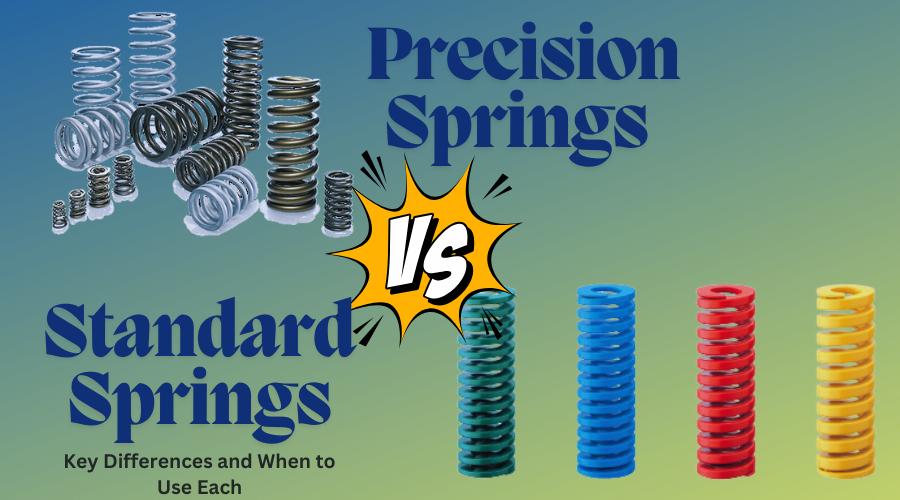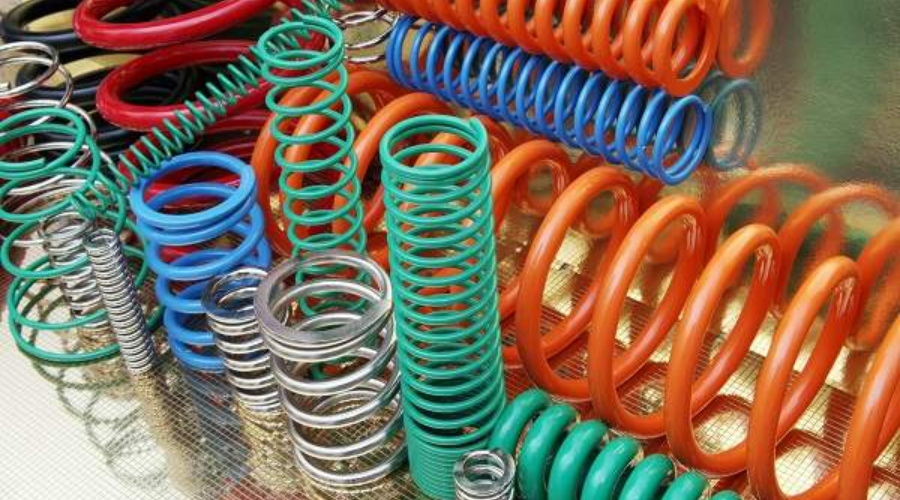Featured Articles
When your garage door suddenly won’t open or close properly, there’s a good chance the tension spring is to blame. These tightly wound springs are essential for counterbalancing the weight of the garage door. But like any mechanical part, they wear out over time. Understanding the tension spring garage door replacement cost can help homeowners plan ahead and avoid being caught off guard by repair bills. In this guide, we’ll cover what tension springs do, signs they need replacing, average replacement costs, factors that influence the price, and whether you should DIY or call in the pros. What Is a Garage Door Tension Spring? A tension spring, often confused with torsion springs, is one of the two primary types of springs used in garage door systems. Tension springs (also known as extension springs) expand and contract helping in opening and closing the door. They're typically mounted on the sides of the garage door track, unlike torsion springs that sit above the door. Key role: Tension springs store energy by stretching when the door closes and releasing that energy to help lift the door when it opens. Signs Your Tension Spring Needs Replacing Recognizing the symptoms of a failing tension spring early can save you from a total garage door breakdown—or worse, injury. Here’s what to look for: •The door won’t open or feels extremely heavy •The garage door slams shut or closes too fast •Uneven door movement or sagging on one side •Loud snapping or popping noises •Visible wear or breakage in the spring If you notice any of these signs, it’s time to consider a replacement. How Much Does Tension Spring Garage Door Replacement Cost? National Average Cost: $150–$300 The total cost for replacing garage door tension springs typically falls within $150 to $300, depending on various factors. This price usually includes parts and professional labor.Here’s a quick breakdown: Item Estimated Cost Replacement tension springs $30 – $70 per spring Labor (1–2 hours) $100 – $200 Service call fee (sometimes included in labor) $50 – $100 Factors That Affect the Cost 1. Type of Spring While this article focuses on tension (extension) springs, keep in mind that torsion springs are often more expensive and labor-intensive to replace. If your system uses multiple springs or a combination, costs can rise. 2. Garage Door Size and Weight Heavier doors (like double-car or insulated doors) require stronger or paired springs, which cost more. 3. Number of Springs Some systems have two tension springs—one on each side. If one breaks, it’s generally advisable to replace both at once for balanced operation. 4. Labor Rates in Your Area Labor costs vary based on your location. Urban or high-cost-of-living areas often charge more for service calls and labor time. 5. Emergency Repairs If you need immediate help—especially on weekends or evenings—you may pay an additional $50–$100 for emergency service. DIY vs. Professional Replacement: What’s Better? DIY Option: Cost savings: You might spend only $40–$70 if you do it yourself. Skill required: Moderate mechanical skills and the right tools. Risk: Tension springs are in a lot of pressure. Improper handling may result in injuries or fatal accidents. Professional Service: Cost: Around $150–$300 total. Safety: Technicians are trained to handle spring tension safely. Warranty: Most pros offer parts and labor warranties. Bottom line: Unless you're experienced with garage door systems, hiring a professional is the safer, more reliable option. Can I Just Replace One Spring? Technically yes—but it’s not recommended. Garage door springs wear at the same rate. Replacing just one creates an imbalance that can: •Cause uneven movement •Strain your opener •Shorten the life of the new spring Pro tip: Always replace springs in pairs, even if only one has broken. How Long Do Tension Springs Last? Tension springs typically last for 7,000 to 10,000 cycles—a cycle being one open and one close. For most families, this translates to about 7–10 years of use. To extend the life of your springs: •Avoid overusing your garage door •Keep the springs lubricated •Schedule annual maintenance checks Are There Any Hidden Costs? Sometimes, yes. Here are a few extra charges you might encounter: Cable or bracket replacement: $20–$40 more if those parts are also worn Roller or track repair: If other components were damaged during the spring failure Service call minimums: Some companies have flat-rate service charges regardless of time spent Never agree to any work until you have a written estimate. Tips to Save Money on Garage Door Spring Replacement •Get multiple quotes from local service providers. •Ask about warranties—some offer 3–5 years on parts and labor. •Avoid emergency service unless absolutely necessary. •Look for seasonal promotions or discounts online. •Consider a maintenance plan to catch issues before they become costly repairs. Conclusion Getting to learn about the tension spring garage door replacement cost will help you make the right decisions when your garage door begins to play up. Although the prices are between $150 and $300, the costs will depend on your door type, spring specifications, labor, as well as the location. Most homeowners are better off leaving this job to the pros. The safety risks of DIY spring replacement outweigh the potential savings—especially when you consider the long-term performance and warranty that a trained technician can provide. FAQs Q: Can I open my garage door if the tension spring is broken? A: You shouldn’t. Forcing it open can damage the door or opener and is dangerous. Call a professional for inspection. Q: How often should tension springs be replaced? A: On average every 7–10 years or 7,000–10,000 cycles, depending on usage. Q: Is it normal for springs to break suddenly? A: Yes, especially if they’ve reached the end of their cycle life or haven’t been maintained.
READ FULLSprings appear throughout daily life because they function inside pens and automotive suspension systems as well as numerous other mechanical components. The basic mechanical devices function as important components throughout manufacturing sectors and the automotive industry as well as aerospace and electronics applications. All mechanical springs cannot be viewed as basic units of equivalence. This article explains the functionality and selection process of three fundamental mechanical springs namely compression, tension, and torsion. Why Understanding Spring Types Matters Choosing the right spring type is critical for optimal performance, durability, and safety. A spring that’s too stiff, too weak, or made for the wrong application can result in mechanical failure or even injury. The knowledge of fundamental spring variations enables you to pick good decisions for designing approaches and maintenance tasks and custom project development. Overview of Spring Types Let’s start with a quick comparison table: Spring Type Primary Function Shape Common Applications Force Direction Compression Resists being compressed Open-coiled, helical Pens, suspension, valves Push (axial load inward) Tension (Extension) Resists being stretched Tight-coiled with hooks Trampolines, garage doors, toys Pull (axial load outward) Torsion Resists twisting or torque Coiled with legs/arms Clothespins, hinges, mouse traps Rotational force (torque) 1. Compression Springs: The Pushback King Compression springs represent the primary category of springs that people use in various applications. They’re designed to compress under load and push back to return to their original shape. Key Characteristics: • Open, helical design • Made from round wire or flat wire • Load applied along the spring axis Applications: • Ballpoint pens • Car suspension systems • Industrial valves • Mattresses Advantages: • Simple design • High load resistance • Easily customizable in terms of size and stiffness When to Use: Choose compression springs when you need a spring to push back against a force or absorb shock. 2. Tension Springs: Built for the Pull Tension springs, also called extension springs, work by stretching instead of squeezing. They’re designed to pull back when you try to stretch them. These springs have tightly packed coils and usually have hooks, loops, or rings on each end so they can be attached to other parts. Key Characteristics: • Tightly wound coils • Ends designed for secure attachment • Designed to operate with tension load Applications: • Trampolines • Garage door mechanisms • Exercise machines • Farm machinery Advantages: • Compact design • Strong resistance to pulling force • Highly customizable end hooks When to Use: Go for tension springs when your application needs to pull back or return to its original position after being stretched. 3. Torsion Springs: Twisting Under Pressure Torsion springs work differently from both compression and tension springs. Instead of linear movement, they store rotational energy. The spring arms twist to exert torque in the opposite direction. Key Characteristics: • Coiled design with legs/arms • Designed to resist angular forces • Rotation generates the restoring force Applications: • Clothespins • Hinges (e.g., car doors) • Mousetraps • Cameras and latches Advantages: • Handles angular movement • Offers precise torque control • Durable under repetitive twisting motion When to Use: Use torsion springs when something needs to twist or turn, like rotating or pivoting parts. How to Choose the Right Spring for Your Project When selecting between compression, tension, and torsion springs, consider the following: 1. Direction of Force • Use compression for pushing back • Use tension for pulling back • Use torsion for rotational or twisting movement 2. Space and Design Constraints • Compression springs are more compact when loaded • Tension springs need mounting points on both ends • Torsion springs require space to rotate 3. Load Requirements • Determine how much force your spring needs to handle • Use spring rate (stiffness) to match performance 4. Material and Environment • Stainless steel for corrosion resistance • Music wire for high strength • Phosphor bronze or beryllium copper for electrical conductivity 5. Cycle Life and Durability • If your spring will cycle repeatedly, choose materials and designs built to last Bonus Tips: Custom vs. Off-the-Shelf Springs • Off-the-shelf springs: Cost-effective and available in standard sizes • Custom springs: Perfect for specialized applications • If your project has limited space or needs a certain amount of force, a custom-made spring might be a better choice. Common Spring Failures (and How to Prevent Them) Failure Type Cause Prevention Tip Fatigue cracking Overuse or repeated stress Choose high-fatigue-resistant material Overloading Exceeding load limits Use correct spring rate Corrosion Harsh environments Use corrosion-resistant materials Improper installation Misalignment or over-tightening Follow proper mounting procedures Conclusion: Choosing the Right Spring Made Simple Springs may look simple, but choosing the right type—compression, tension, or torsion—can make or break your application. By understanding how each spring functions, their advantages, and where they're commonly used, you can select the best option for performance, durability, and efficiency. Whether you're prototyping a product, upgrading machinery, or solving an engineering problem, always consider the force direction, environment, and load requirements before picking your spring. FAQs What is the main difference between compression and tension springs? Compression springs resist pushing forces, while tension springs resist pulling forces. Can I use a tension spring in place of a compression spring? Generally no—each spring type is designed for a specific force direction and use case. What materials are best for springs? Stainless steel, carbon steel, and phosphor bronze are popular choices depending on the application and environment.
READ FULLTension springs are some of the most commonly used springs in a range of applications, from simple to complex. Although they have a simple construction, their role is immensely important in any application, and without these springs, many products will not function, or even if they will, they will suffer a breakdown very soon. In this blog, we will take an in-depth look at how tension springs enhance automotive performance and why their use is crucial in automotive design. What is a Tension Spring? Tension spring is also known as extension springs. Unlike compression springs these springs are arranged in a manner to be pulled rather than compressed. Tension spring give resistance to a pulling force. Once a force is applied the spring acts to return to the former shape and length. The tension springs are usually made of wound coil which has an elastic quality. Let us see how the properties of tension spring contributes to better performance and reliability of the automotive system. Comfortable Ride and Smooth Handling Tension springs are an integral part of the suspension system of any car. They function as shock absorbers when the car encounters bumps on the road. The result is a smooth ride where the driver does not have to encounter too many bumps. The springs are also important for the smooth handling of the vehicle as they are the part that connects the tire with the chassis and road. This makes the turning of the car responsive, which is crucial during high-speed driving. Balanced Car’s Weight Distribution Compression springs are also used in the suspension system to deliver a more uniform weight distribution of the car’s weight between its four wheels. The equal sharing of weight between the wheels enables the driver to handle the car much more easily and makes the car more stable during driving. Stability is vital for bulky vehicles like trucks and SUVs. In trucks, the springs should be sturdy enough to bear heavy loads. Engine Systems Apart from the suspension system, tension springs also play an important role in the operation of the vehicle engine. These springs regulate the air intake which is the part of the core process of combustion. These springs help control the intake and exhaust valves, ensuring they open and close at the right time to regulate the speed of combustion. Boosting Engine Efficiency In engine functionality, timing the air intake is crucial for a better performance. A precision needs to maintained in opening and closing of the valves so that a fixed quantity of air enters combustion chamber. This precision is important in maintaining efficient fuel consumption and minimizing carbon emissions. Failure of springs to perform the task means the engine misfires and the result is less power output. Braking System Performance Efficient braking is crucial not only to stop the car but also to drive around corners, and tension springs have an important function to play in braking as they help disengage the braking pads during driving. In disc brakes, these springs are used to disconnect brake pads once the brake pedal is released, the excessive dragging on the disc surface can prematurely wear out the brakes, and brake springs prevent this by disconnecting the brake pads. Timely disconnection cuts down on unnecessary friction, which can damage the brakes. Seating Applications Tension springs are also used in seat adjustment mechanism in the vehicle and make comfortable seating possible for drivers and passengers. From fasteninf the backrest in a particular position or sliding the seat forward or backward, these springs help the driver recline the seat or sit upright. Common Materials Used in Tension Spring Construction Tension springs are used in diverse applications that have significantly different inner mechanisms, tension springs are constructed from various materials based on the application and the tension force needed to match the function. Durability is a central property that is essential for springs since spring components tend to be used continuously in the inner workings of any machinery. Common metals that are used in the construction of springs are: Stainless Steel: This is a long-lasting material that is rust-resistant and excellent for spring construction. Low Alloy Steel: This steel type made from a combination of nickel and chromium and is much cheaper to produce than stainless steel. It is widely use to produce mechanical springs as it can easily be welded. Copper Alloys: Springs that require good electrical conductivity such as battery springs are made from copper alloys as it is ductile and does not corrode and also has a high strength. Titanium Alloys: This material is known for its exceptional tensile strength. Also, its lightweight and resistant to corrosion. It can also handle extreme temperature makes it a suitable material for prodcuction of springs for advanced machinery. Conclusion The important role of tension springs shows how useful they are in many industries. Tension spring's flexibility and energy retention capabilities, act as essential elements in automotive systems. Their capacity to effectively store and discharge energy and direct that energy precisely is their specialty. In vehicle performance, the intensive processes can wear out the springs, so buying low-grade springs should be avoided.
READ FULL


.png)


